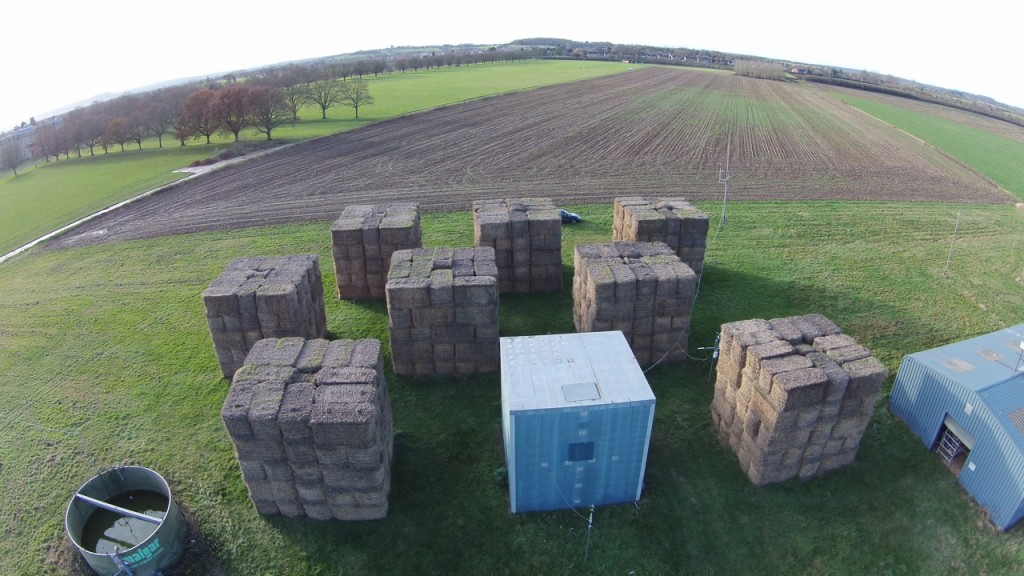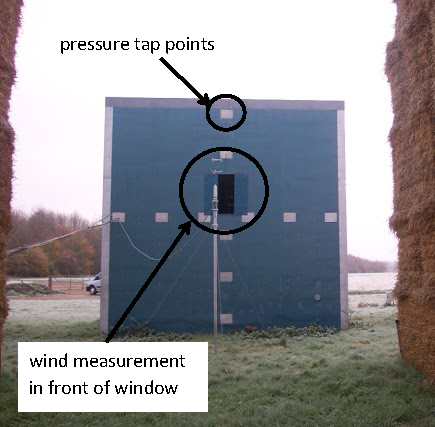By Janet Barlow
Climate change could make life unbearably hot inside buildings in the middle of our cities. Whilst at night this could make it difficult to sleep, by day this would make it difficult to work … So what does a strange-looking experiment in a frosty field in Silsoe, Bedfordshire have to do with it … ?
As part of the Refresh project we are investigating how city microclimates affect indoor temperatures, and thus comfort and productivity in the workplace. The first question we are asking is – how does the microclimate of an array of buildings in a city change the ventilation rate of a single building, compared to an isolated building?
Figure 1 – Natural ventilation flows in a building (source: https://www.extension.purdue.edu/extmedia/AE/AE-97.html )
Figure 1 shows that natural ventilation of a building is caused by two processes: either hot air rises up inside the building, escaping out the top and sucking cooler air in its wake (stack effect); or wind blowing against it drives fresh air through cracks and windows. Both processes change the pressure on the surface of the building – an increase compared to atmospheric pressure pushes air inside the building, a decrease sucks it out.
When a building is surrounded by other buildings, the pattern of the wind and temperatures is radically altered. Engineers have a lot of information about wind patterns around isolated buildings, but lack experimental evidence about how ventilation is changed in a building in a typical neighbourhood. This is the motivation for our experiment.
Cities are difficult places in which to make all the required measurements – pressure, windspeed and direction, temperature – so we have built our own! Figure 2 below is an aerial view of the array of ‘buildings’ – representing buildings as simple cubes is often done in such experiments, as the main physical processes are the same as around ‘real’ buildings. You’ll notice the use of hay bales! It’s the shape of the haystacks that affects the flow, not what they are made of. In this experiment we are more interested in wind-driven ventilation than the stack effect, so we are less concerned about the effect of the hay on temperature.
Figure 2 – Aerial view of the rural urban area! Looking west into the prevailing wind
Figure 3 – Close-up of our test building with a sonic anemometer measuring flow in front of the ‘window’.
The blue cube (Figure 3) is the one in which we do repeated ventilation experiments. We can change the shape of the opening, measure the flow rate into the opening, and measure pressure all over the cube. These data are very useful for calculating ventilation which we then compare with our measurements. The cube is well known within the area of wind engineering research.
Hardy PhD student Hannah Gough has been doing the ventilation experiments for several weeks, and will be unpicking the data for the next couple of years – so watch this space for results. Who knows, maybe she will discover a third type of ventilation – the Hay-Stack effect … ?



